Best things to do in Norcia
Not so long ago, we visited Norcia during our one-week road trip in Umbria. Our first impression of this beautiful town was of its charming streets, historic buildings, and kind residents.
Not so long ago, we visited Norcia during our one-week road trip in Umbria. Our first impression of this beautiful town was of its charming streets, historic buildings, and kind residents.
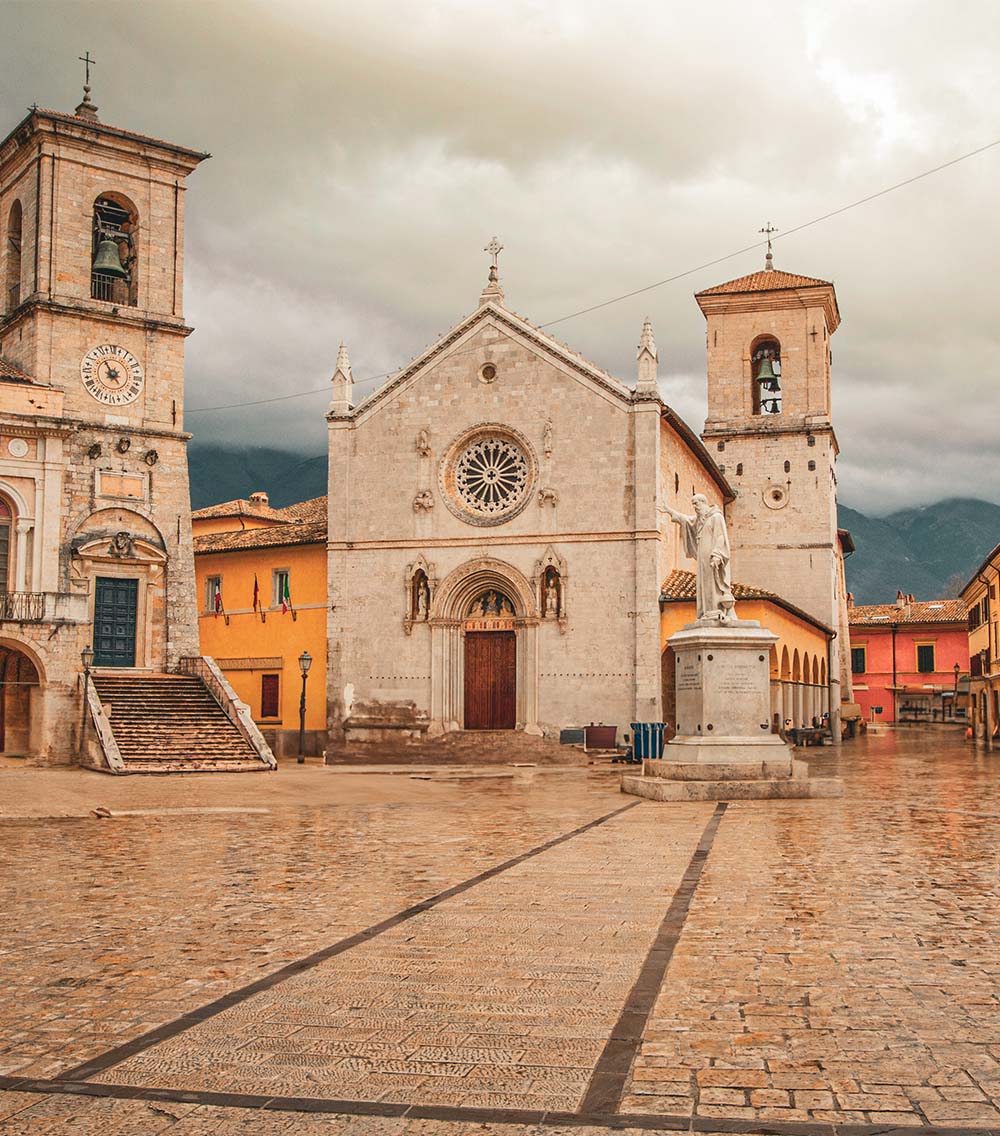
We eagerly anticipated exploring everything this little town has to offer. Regardless of your interests—food, history, or adventure—Norcia offers something that will make you want to return. Come along with us as we describe our incredible adventure and walk you through the top things to do in Norcia. You really won’t want to miss this!
Norcia has a long and diverse past. The town was founded as Nursia under the Roman Empire, possibly in the first century. It rose to fame in the Middle Ages for its advantageous position and strongholds, which were essential during hostilities. Particularly throughout the 14th century, Norcia fought greatly against the state of the church and nearby towns.
Being the birthplace of Western monastic founder St. Benedict, Norcia is also well-known for its religious importance. Dedicated to him in the eighth century, the Norcia Abbey is a monument to this legacy; however, it has been renovated and refurbished many times. Nowadays, Norcia is famous as an Italian gourmet hub because of its culinary treasures, especially its truffles and pig products, as well as its historical and cultural value.
Black truffles: Black truffles and hog items in particular are well-known culinary delicacies of Norcia. The word “norcineria” is used to describe customary pig butchers and the stores they run, so-called after Norcia.
Earthquakes: There have been many damaging earthquakes in the town; the most recent one happened in 2016. Still, Norcia has rebuilt tenaciously and is a thriving town.
Truffle festival: Among the many celebrations of Norcia’s rich cultural and gastronomic legacy is a well-known truffle festival that draws tourists from all over the globe.
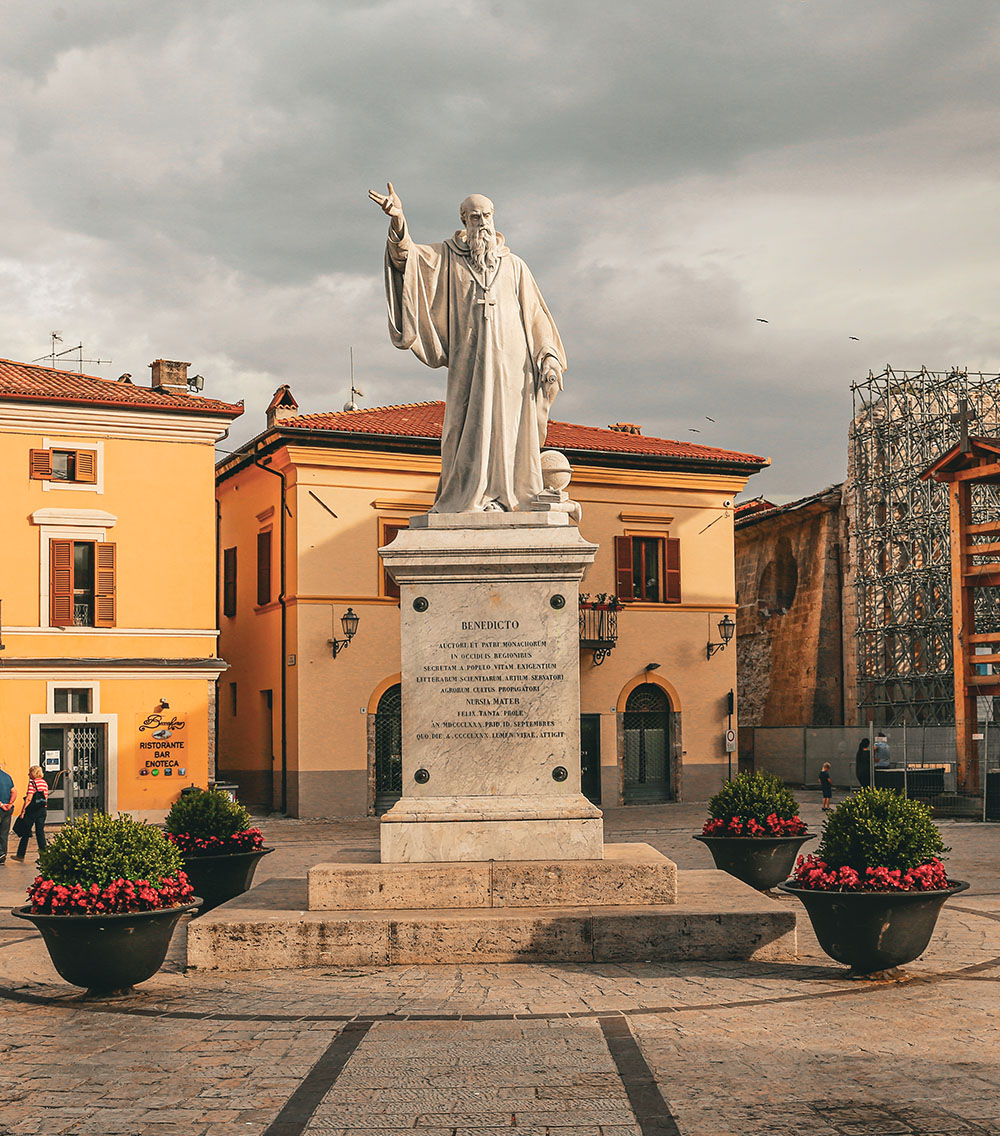
Norcia may be accessed by car, rail, or airline, each with benefits of its own.
Often the fastest and most flexible choice is to drive to Norcia. Drive time from Rome is about two and a half hours. You may explore at your speed throughout the path, which winds through the stunning Italian countryside. You may hire a car either within Rome or at Fiumicino Airport (FCO).
Roman Fiumicino Airport (FCO) is the closest major airport to Norcia. Public transportation or vehicle rental are options from there. You may combine buses and trains if you would rather not drive. Take the 45-minute Trenitalia FR1 airport train to Roma Tiburtina Station first; it will set you back roughly 8 euros. To Norcia, take a bus or cab after continuing by rail from Tiburtina to Spoleto. Though less direct, this approach offers a stress-free trip.
Although there isn’t a direct rail station in Norcia, the closest station is Spoleto. To get to Spoleto, take a train from Rome; the trip takes around one hour. To make sure there are tickets available, buy them beforehand. After arriving in Spoleto, you may travel the remaining distance—roughly one hour— by bus or cab. Regional trains to Spoleto accompany high-speed trains to Rome or Florence for those coming from further places, including Paris or Brussels.
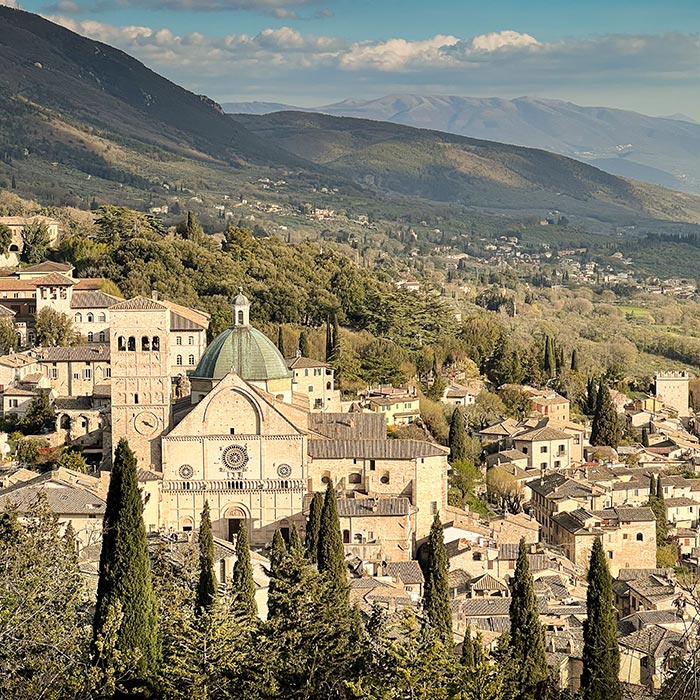
The best way to experience Umbria is to rent your own car! We recommend booking well in advance using price comparison sites like rental cars if traveling in the peak summer season.
Though it takes a little effort, parking in Norcia may be found rather easily. Street parking close to the city center and special parking lots are two of the available choices. Here are the best options for parking in Norcia:
Norcia is well-known for its cheeses, black truffles, and cured meats. Cooking classes are a great approach to discovering the local way of life. Usually lasting a few hours, these courses provide practical experience in making classic Italian cuisine. Using locally obtained, fresh ingredients, you will learn how to prepare a variety of regional delicacies like pasta, risotto, and desserts throughout the workshop. Many times, local cooks who are passionate about Italian food and have experience teaching the workshops. You get to savor the results of your work after the cooking session when you eat the meals you made with local wines.
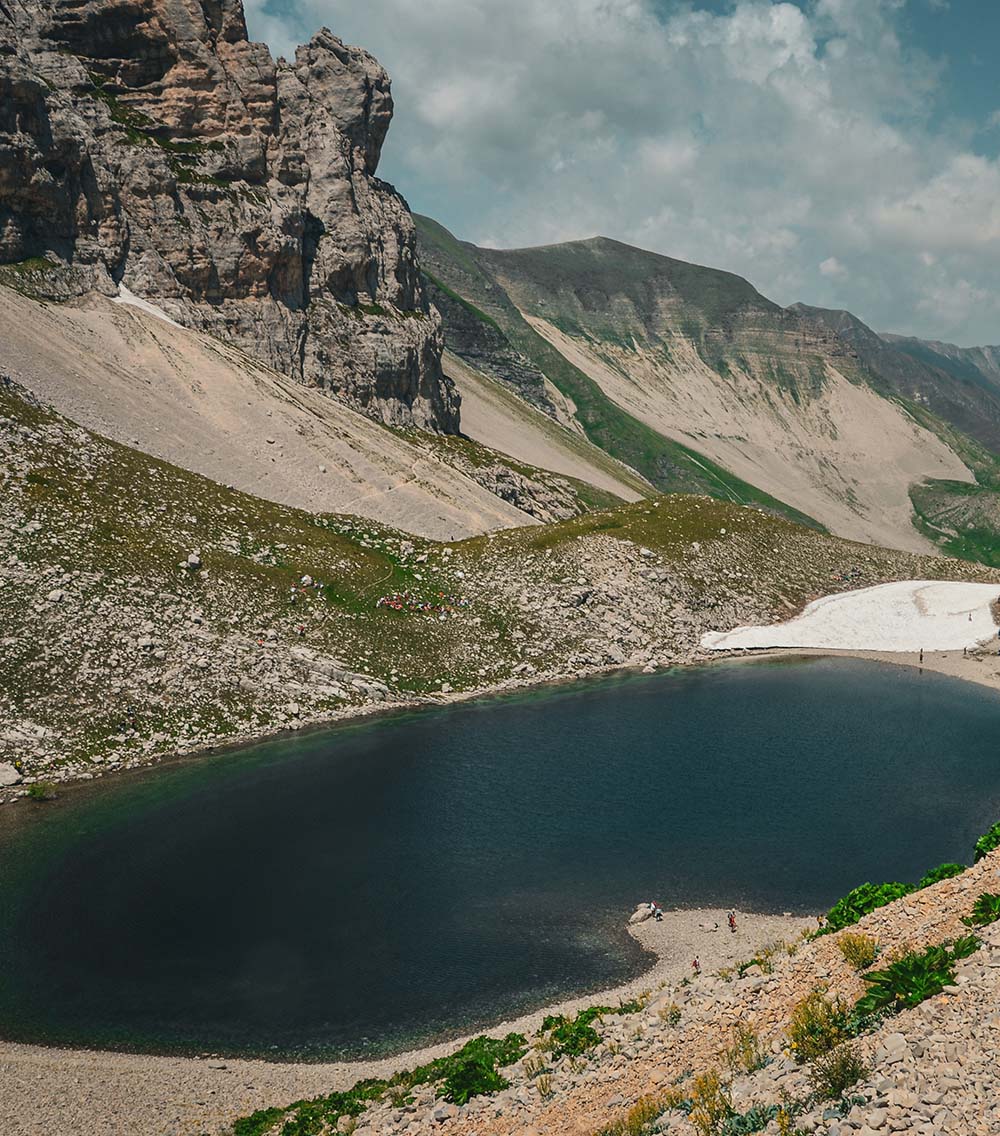
The glacial lake known as Lago di Pilato, or Pilate’s Lake is located in Monti Sibillini National Park. Tucked up at an elevation of around 1,940 meters (6,365 feet), this charming lake is well-known for its unusual form, which resembles a pair of glasses. Legends hold that Pontius Pilate’s corpse was transferred here after his death, which is why the lake carries his name. Hiking the steep and picturesque Sibillini Mountains is necessary to reach Lago di Pilato. If you are a hiking lover, you will enjoy this path because of its amazing views of the surrounding hills and valleys. A picnic or a reflective hour would be ideal at the peaceful and ethereal lake itself.

The Abbey Church of San Benedetto is an important religious and historical site in Norcia. It is said to have been erected over the birthplace of Saint Scholastica, the twin sister of Saint Benedict, the founder of Western monasticism. A wonder of architecture, the church combines Gothic and Romanesque elements. The Abbey Church, however badly damaged in the 2016 earthquakes, continues to represent Norcia’s tenacity and spiritual legacy. The church is still being worked to be restored to its previous splendor. The surviving building may be explored, the facade’s fine features appreciated, and the history and importance of this hallowed location explained.
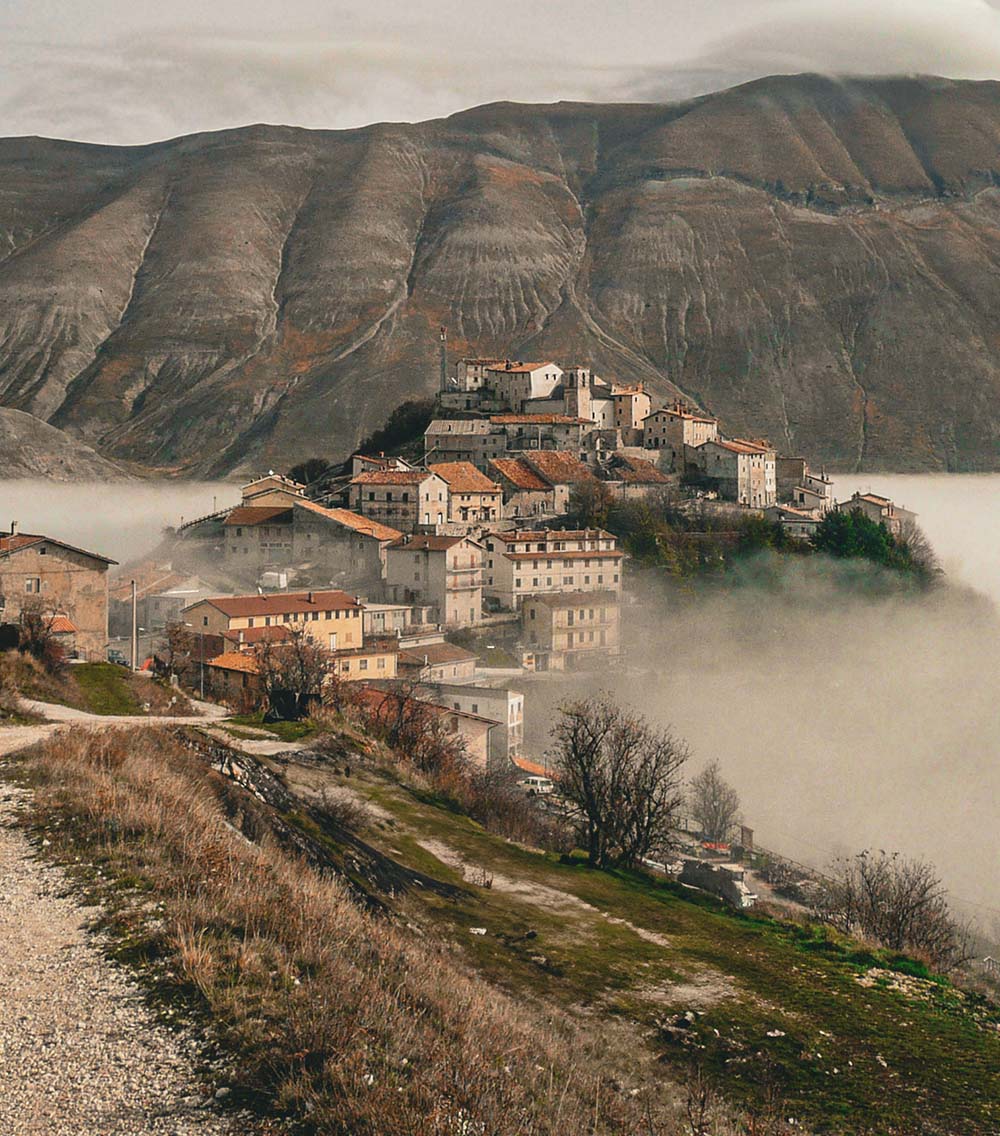
Castelluccio is a little community some 28 kilometers (17 miles) from Norcia. It is located on a hill facing the Piano Grande. The plain becomes a brilliant tapestry of hues every year between late May and early July when wildflowers, including poppies, violets, and lentil flowers, bloom in a phenomenon known as La Fioritura. See the breathtaking views, go horseback riding or trekking in the neighboring hills, and sample regional delicacies like Castelluccio lentils. Though severely devastated by earthquakes, the town itself is charming and provides an insight into the customs of the local agricultural community.
Norcia is also famous for its premium sausages and cured meats especially the Brancaleone da Norcia Deli and the butcher store. If you like eating and want to sample and buy some of the best regional items you should not miss this place. Samples of prosciutto, salami, and the well-known Norcia sausage are available at Brancaleone da Norcia. Along with cheeses and other gourmet goods, the store sells truffles. The personnel are passionate about their work and they are pleased to provide information about the manufacturing process and the distinctive tastes of their goods.
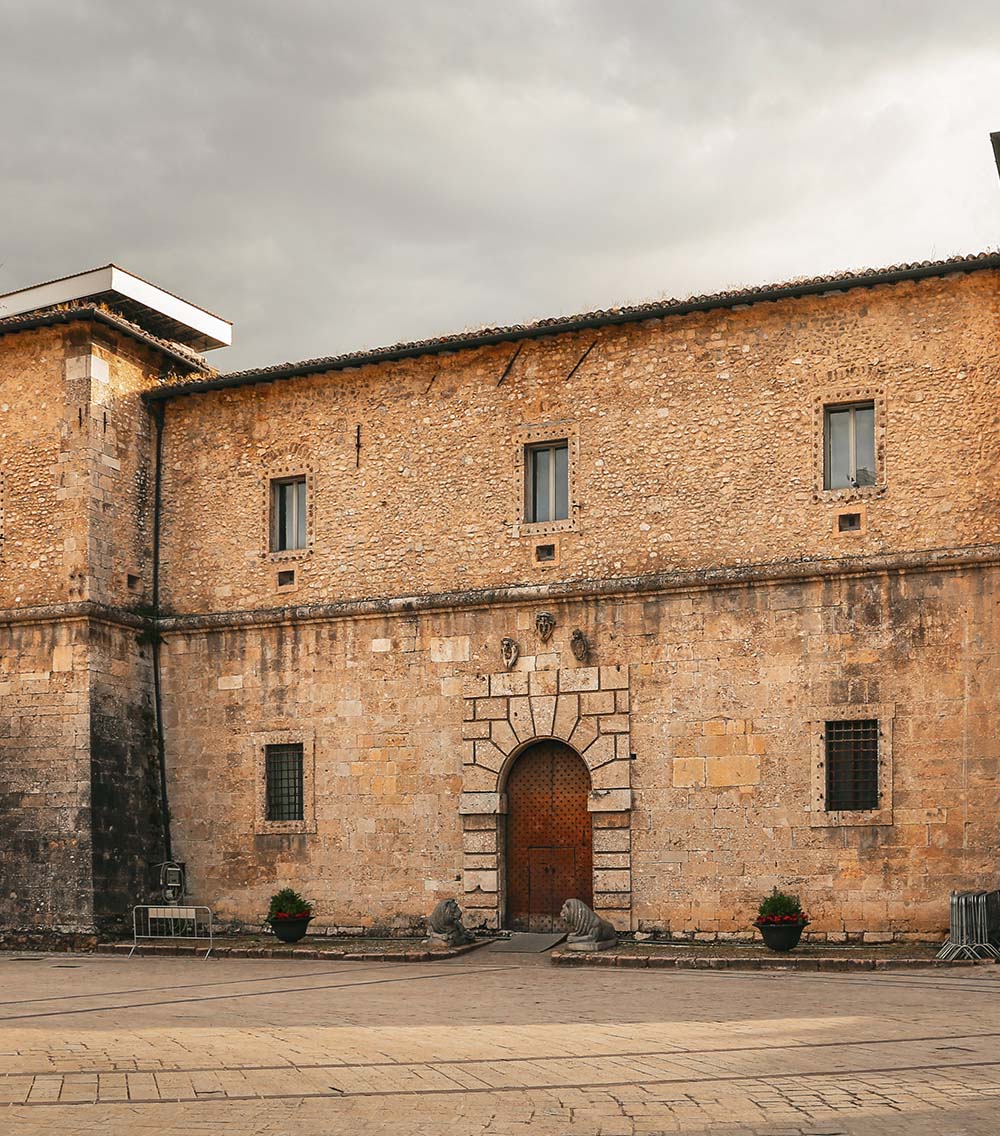
Housed in a 16th-century stronghold erected by Vignola for Pope Julius III, the Museo Civico e Diocesano La Castellina is situated in the historic heart of Norcia. A thorough history and culture of Norcia are shown via the museum’s extensive collection of religious art, archeological discoveries, and historical items. Exquisite manuscripts, sculptures, liturgical items, and paintings are among the museum’s collections. Highlights are Roman and medieval relics as well as artwork by regional artisans. Seeing La Castellina provides an intriguing window into Norcia’s and the surrounding area’s artistic and cultural legacy.

The Palazzo Comunale, or Town Hall is also one notable historic structure in Norcia. Nestled in the center of the town, on Piazza San Benedetto, the Palazzo Comunale is a 14th-century architectural wonder. Over the ages, the structure has seen several restorations that have combined many architectural styles. Important municipal offices and historical documents are kept in the interior, which has a clock tower and beautiful arches on the façade. Apart from being a useful structure, the Palazzo Comunale represents the long history of Norcia.

The social and cultural hub of Norcia is the main plaza, Piazza San Benedetto. The plaza, so named after Saint Benedict, is encircled by ancient structures, such as the Palazzo Comunale, the San Benedetto Abbey Church, and other stores and cafés. Locals and tourists assemble in the bustling area to mingle, get coffee, or take part in festivals and activities. Offering a lovely location with its quaint architecture and lively ambiance, it is the perfect place to begin exploring Norcia.
Birthed in Norcia in 1814, Dom Rosendo Salvado was a Benedictine monk and missionary whose life and accomplishments are honored by the Rosendo Salvado Statue. Salvado is honored for his work in Australia, where he promoted the welfare and rights of the Indigenous people and established the Benedictine mission in New Norcia in Western Australia. Salvado is seen in the statue, which is in Piazza San Benedetto, wearing a monk uniform and clutching a book and a cross. It acts as a constant reminder of the links Norcia has to the outside world and the lasting influence of its famous sons.

Il Criptoportico Romano di Porta Ascolana is a historic Roman cryptoporticus in Norcia, next to the Ascolana Gate. A covered hallway or gallery, a cryptoporticus is sometimes used as a foundation for other buildings or storage. This archeological site with its well-preserved masonry and architectural features provides a window into the Roman history of Norcia. The Romans’ engineering methods may be studied and beneath-ground passageways explored by tourists. Fans of old architecture and history will find the location to be an attractive visit
A specialty of the area is mainly brado di Norcia or free-range pork. As the pigs are reared in the wild or semi-wild, they can forage for their food, which produces meat that is both delicious and of excellent quality. A century-old Norcian reputation for premium pig products is being maintained today, and maiale brado is still used to make sausages and cured meats. These specialties are available for sampling in nearby delis, restaurants, and marketplaces. A feature of Norcia’s culinary offerings, the meat has a rich flavor and texture.
Offering a mix of classic and contemporary cuisine, the Salvado Roadhouse Cafe is a warm and friendly place in Norcia. The café, named after Dom Rosendo Salvado, offers a selection of freshly prepared, regional cuisine, including both Italian classics and worldwide favorites. Both residents and visitors like the cozy ambiance and kind service of the café. Whether you’re in Norcia for a small lunch, a full supper, or just a coffee, the Salvado Roadhouse Cafe offers a great eating experience.
Because Norcia’s town center is small and pedestrian-friendly, strolling is the best way to see its old streets, neighborhood stores, and sights like the Abbey Church and Piazza San Benedetto.
Bicycles
One well-liked way to see Norcia and its stunning surroundings is to hire a bicycle. At their speed, bikers may explore the surrounding villages and countryside.
Car
Having a vehicle allows you to go beyond Norcia and take in the surrounding natural parks and picturesque routes. Generally speaking, there is parking around and within the town center.
Public Transportation
Norcia is linked with other towns like Spoleto via local buses. Travelers wishing to see the area without a vehicle will find this to be a practical choice.
Taxi
Taxis provide a handy door-to-door service for shorter journeys within Norcia or transportation to other cities and attractions.
These restaurants are particularly noteworthy:
Ristorante Granaro del Monte
This little eatery, housed in a historic structure, specializes in truffle pasta, wild boar, and meats that are acquired locally. It’s perfect for everyone looking for real Umbrian tastes.
Vespasia
Vespasia, housed in the Palazzo Seneca Hotel, is a sophisticated restaurant that specializes in creative takes on Umbrian cuisine. Await delicacies prepared with locally grown, fresh ingredients and faultless service.
Osteria La Taverna
Distinguished by its cozy atmosphere and friendly service, Osteria La Taverna serves cuisine that highlights local favorites like porchetta (roast pig), cacio e pepe (cheese and pepper pasta), and seasonal vegetables.
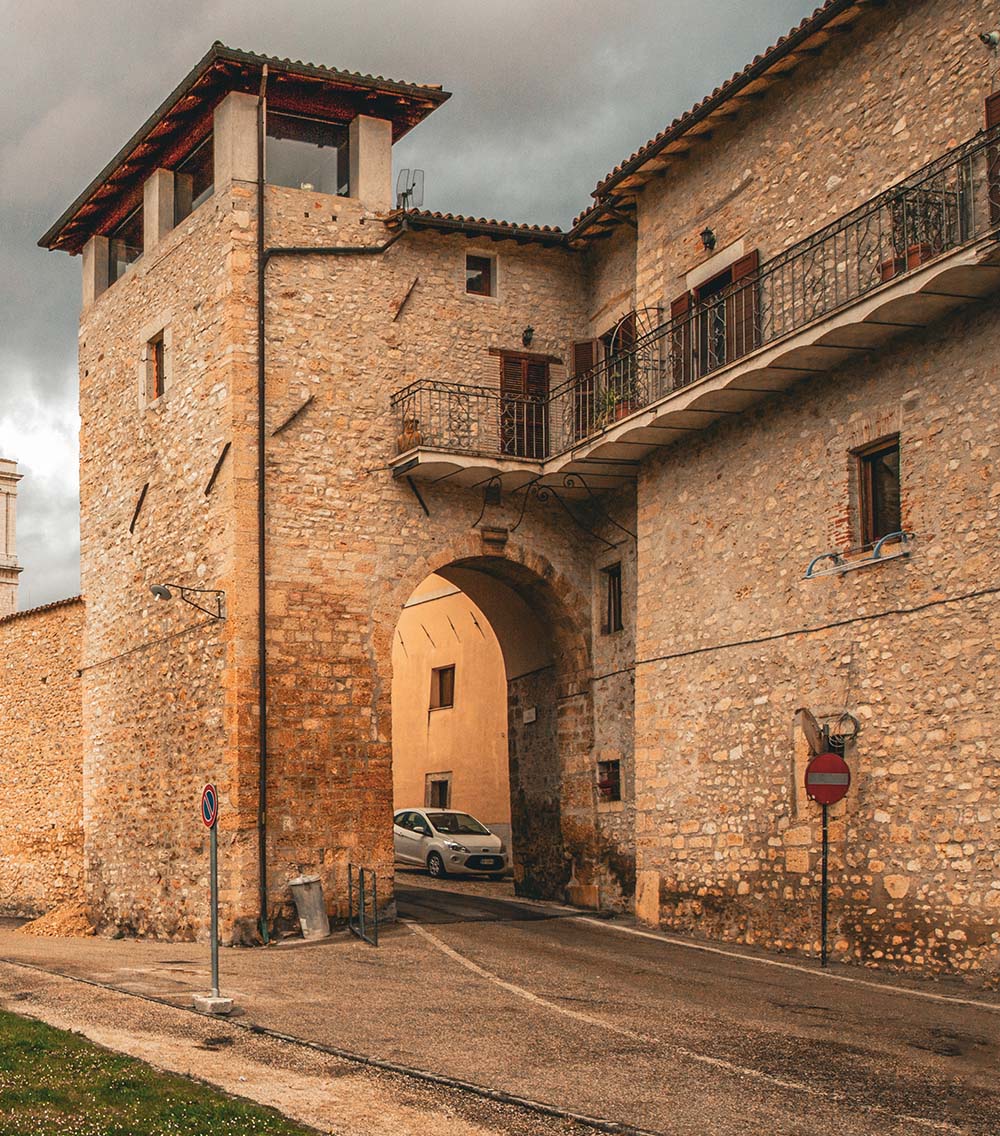
Palazzo Seneca
Nestled in the center of Norcia, Palazzo Seneca is a sumptuous hotel with tastefully furnished rooms and suites. It is home to Vespasia, a Michelin-starred restaurant renowned for its creative Umbrian cuisine.
Hotel Salicone
Tucked away in the charming countryside, Hotel Salicone provides expansive views of the neighboring mountains. There is a wellness center, a restaurant offering Umbrian cuisine, and large rooms furnished in a rustic manner.
Agriturismo La Cascia
Agriturismo La Cascia provides lovely farmhouse lodgings surrounded by olive and grape orchards for a more rural experience. Dinners are cooked by hand using fresh, regional ingredients.


Acclaimed for its magnificent Basilica of St. Francis, Assisi is a tranquil setting with ancient buildings and priceless artifacts that make it a UNESCO World Heritage site. Driving there from Norcia takes roughly 1.5 hours.

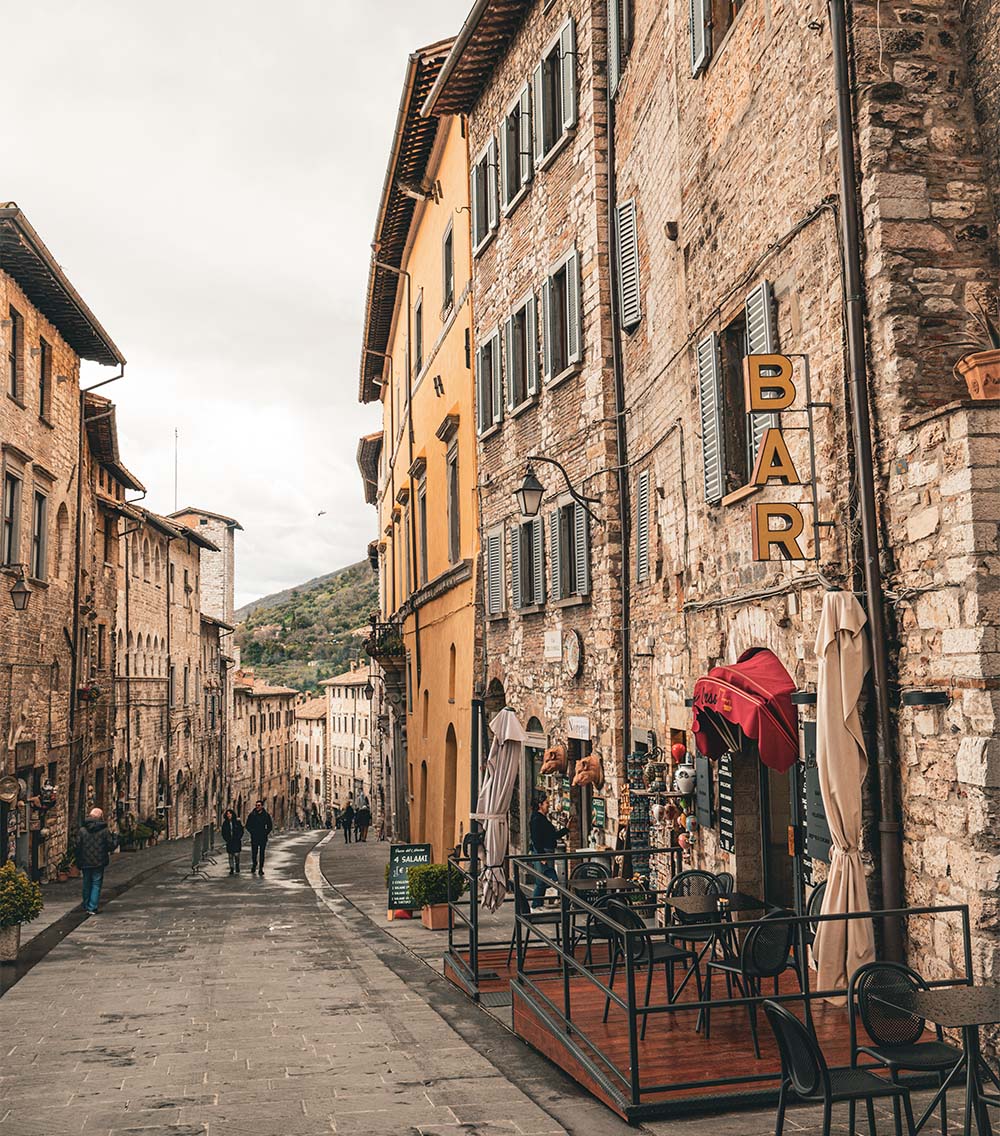
The beautifully preserved medieval village of Gubbio is well-known for the Ceri Festival and the magnificent Palazzo dei Consoli. Though a little farther—roughly two hours by car—its quaint neighborhoods and expansive vistas make it well worth the trip
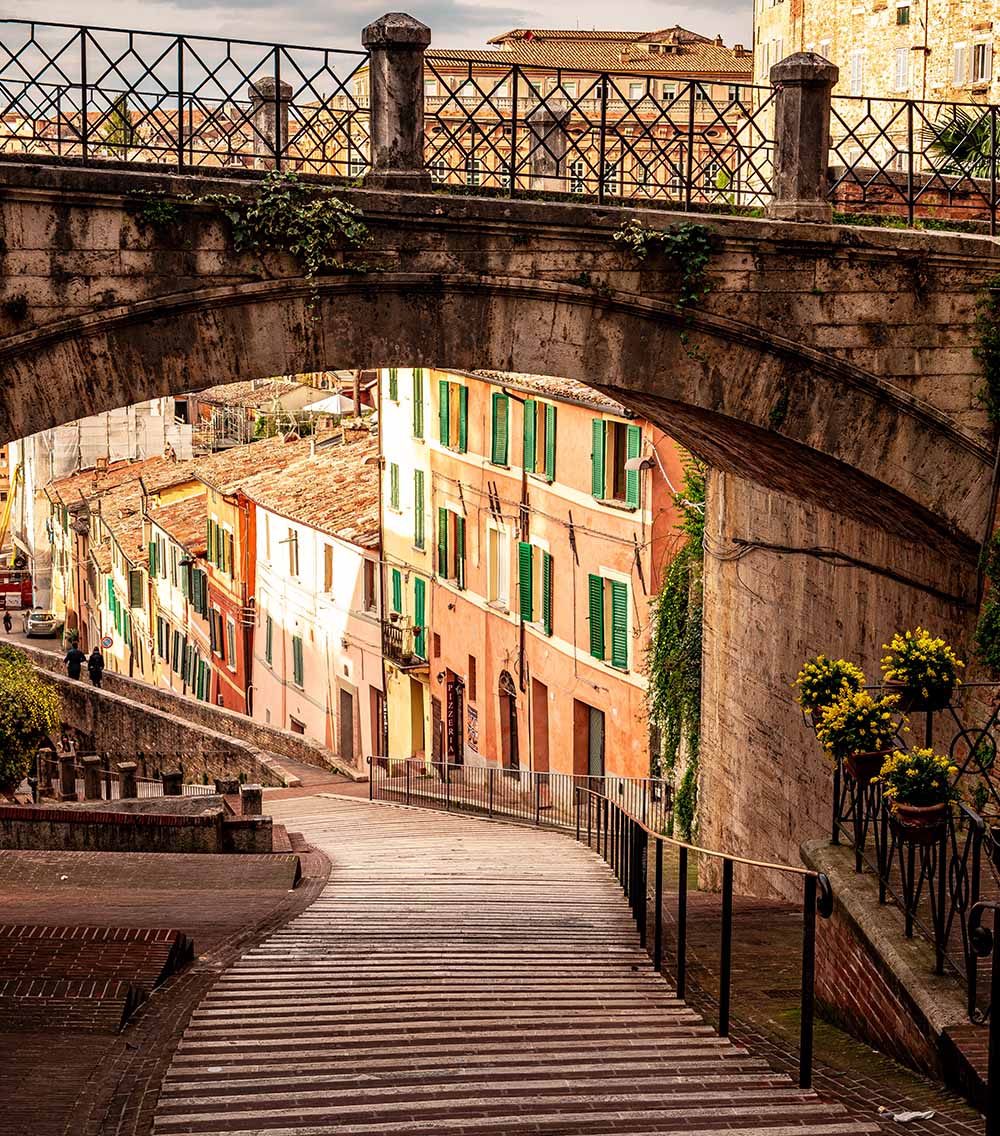

A fusion of history, artwork, and culture, Perugia is the capital of Umbria. Highlights include the Rocca Paolina fortification, the National Gallery of Umbria, as well as the Palazzo dei Priori. Norcia is about 1.5 hours‘ drive from Perugia.
Norcia is best visited at the end of spring (May to June) and the beginning of fall (September to October). Walking, seeing the countryside, and seeing neighboring sites like Lago di Pilato and Monti Sibillini National Park are all made possible by the usually moderate and pleasant weather throughout these months. These times of year also avoid the busiest travel seasons, so guests can take their time exploring this quaint Italian town. Foodies would be well-served by visiting Norcia during the autumn when the region is well-known for its culinary customs, which include truffle hunts and traditional food festivals.
Norcia is pronounced as “NOR-chuh” in English, with a focus on the first syllable.
Of course, Norcia is well worth seeing. Famous for its natural beauty, rich history, and culinary delights—especially its well-known cured meats and truffles—this charming town is tucked away in the Sibillini Mountains of Umbria, Italy.
Norcia is a derived form of the term “Nursia,” from ancient Sabine, perhaps meant a little river or a location rich in water.
Norcia is well-known for its cured meats, particularly Norcia sausage (Norcineria), a kind of pig sausage prepared using traditional techniques and ingredients obtained locally.
Pig sausage from Norcia is known as norcia sausage or norcineria. Its unique taste is what defines it; it’s usually spiced and herb-infused and produced by neighborhood butchers called “Norcini“.
Situated in the Apennine Mountains, more especially in the Valnerina valley, Norcia is a region in central Italy’s Umbria.




No Comments